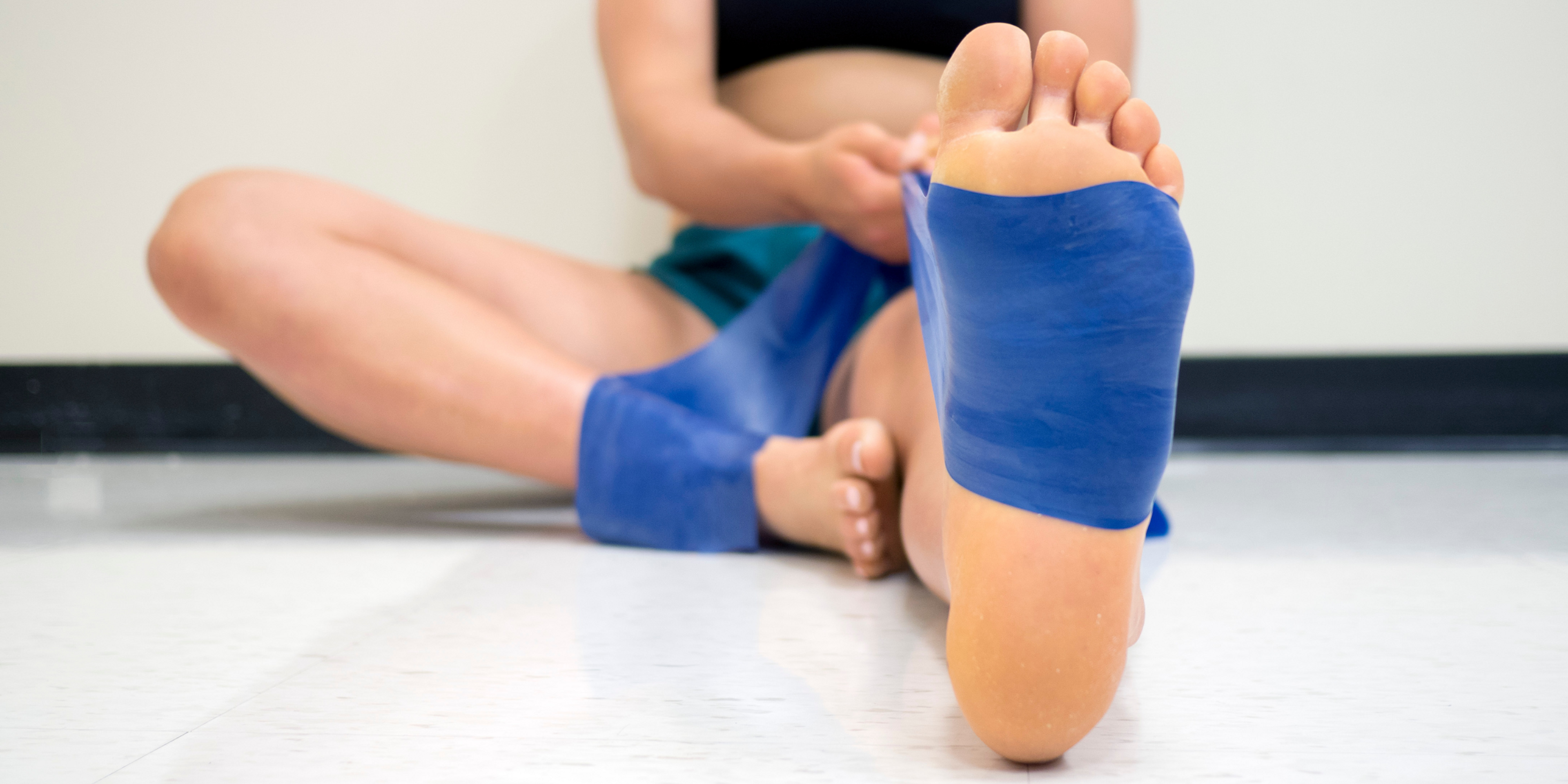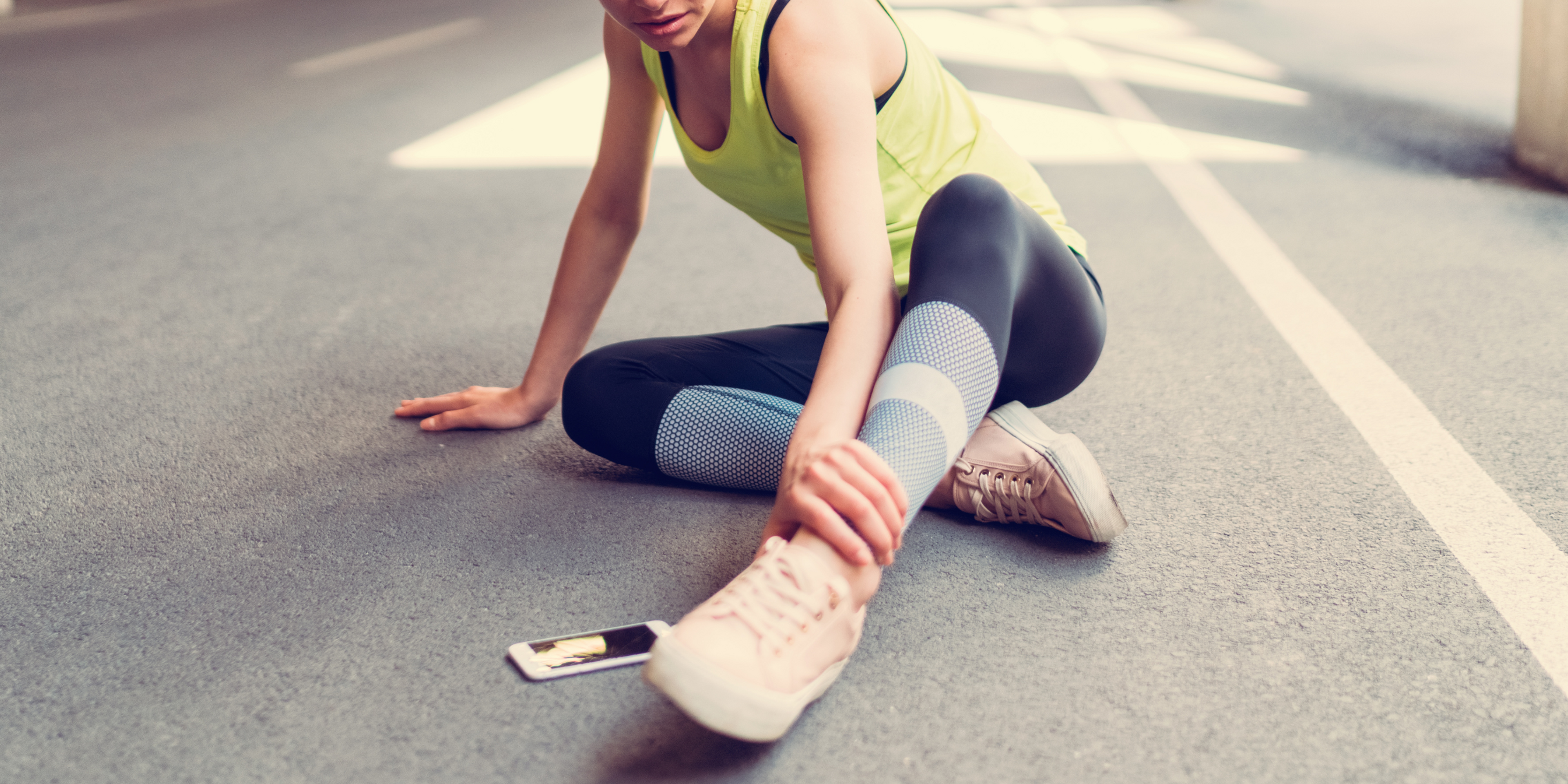How exercises help you to recover faster from your ankle sprain (examples included)
Let's begin with what exercises are essential after an ankle sprain injury and why.
What exercises are best for ankle sprains
It's quite common to injure a combination of structures (ligaments, muscles, tendons, and joints) when you sprain an ankle. As a result, your ankle may feel stiff, your muscles may lose some strength, and it may be more challenging to control your ankle movement properly.
To fully recover and get back to your activities without re-injury, you need to restore all these elements.
Researchers have identified specific types of exercises that should be included in an ideal treatment plan for ankle sprains.
The best exercises to include in your ankle sprain treatment plan are ones that:
Guidelines for ankle sprain exercises
When to start ankle sprain exercises
With most minor to moderate sprains, you can start rehab exercises within the first few days after your injury. The earlier, the better. But any exercises you do should be set at the right level, or they may cause trouble.
How to start ankle sprain exercises?
Evidence suggests that the best way to start exercises after an injury is slow and pitched at a level that matches your injury severity, individual abilities, and circumstances.
Remember, if your exercises are too easy, you won't make any progress. But, if they're too hard, you risk aggravating your injury and slowing down its healing.
A good guide is to find your exercises challenging while still being able to maintain good form. In this way, you'll make steady progress without setbacks.
If you're unsure, ask a healthcare professional, or use the Exakt app for evidence-based guidance.
Protecting your injured ankle during exercise
Your ankle structures are still healing in the early stages, so you should protect them. For example, in the early stages of rehab, it may be best not to turn your foot inwards if you have an outer ankle sprain. You may even want to use an ankle brace to limit that movement.
But these should only be temporary measures.
During the later stages of your rehab, aim to do ankle exercises in all directions and only wear a brace when necessary, for example, during sport or intense exercise.
You can learn more about how to use ankle braces throughout your recovery in this article.
How to progress ankle sprain exercises
The key to progress is making small changes and constantly monitoring your body's responses.
Throughout your recovery, you can expect to experience some discomfort and swelling. But your ankle should never become much more painful or swell significantly in response to your exercises.
While your goal is to slowly increase your exercise intensity and complexity, it's best not to rush it. Instead, only progress an exercise once you've fully mastered it.
The app uses your feedback after each workout to help you decide when you're ready to progress.
What if you have pain during your rehab?
As discussed above, minor changes in discomfort and swelling after exercises are usually okay. But if something concerns you, or your ankle swells or hurts much more than before, you should discuss it with a healthcare professional.
Now you know the guidelines for exercise, let's look at each type of ankle sprain exercise in more detail.
Strength training exercises
Why we do it
Strengthening exercises make your ankle muscles and tendons stronger. In addition, they help to heal the ones that may have been injured when you sprained your ankle. They also help restore the control around your ankle and leg in general.
Which muscles should you exercise after an ankle sprain?
Muscles around your ankle
The most effective exercises target all the muscles and tendons around your ankle. These include your:
- Peroneals (1)
- Anterior tibialis (2)
- Calf muscles (3) and Achilles tendon (4)
- Posterior tibialis (on the inner side of the foot)
Where to start
Start with isometric exercises - where you tense the muscles without moving the joint. These are the best strengthening exercises to start with after an ankle sprain because they:
- Activate your muscles at low loads
- Keep the strain off your injured ankle structures
- Improve blood flow, reduce swelling and pain, and promote healing
How to progress
Once your initial injury settles and your healing is underway, you can move to progressively heavier-loaded strengthening exercises like calf raises. And work through greater ranges of movement as your injury and strength allow.
Later, you can add plyometrics. These are high-intensity exercises involving rapid stretching and contracting of your muscles. They improve your explosive power, balance, movement control, and coordination. For example box jumps:
Muscles further away from your ankle
Other muscles that offer support to your ankle through improving the control in the rest of your leg are your:
- Hip abductors
- Quadriceps
- Gluteals
- Hamstrings
Where to start
Start with exercises that don't place a lot of strain on your ankle. Bridges or isometric wall sits are examples of activities that work for this.
How to progress
Slowly progress to doing exercises that require more skill and control. For example, lunges and single-leg squats.
Balance exercises for ankle sprains
Why we do them
Research shows that balance exercises help improve your proprioception and coordination. Which can decrease your risk of ankle re-injury by over 40%.
Proprioception and ankle sprains
What is proprioception, how does it work, and why does it matter?
Proprioception is your body position sense. It relies on information from your senses (sensory input) that include:
- Tiny sensors in your joints, muscles, tendons, and skin (touch and pressure sensors)
- Your eyes (vision)
- Your inner ear or balance center (called your vestibular system)
Proprioception helps your brain know where your body and limbs are in space, so it can effectively plan, coordinate, and control your movements.
It's why you can walk, run, and jump safely without consciously thinking about it. If you are interested in reading more about proprioception we adivse you to read this article about balancing exercises for knee injuries.
How do ankle sprains affect proprioception?
Ankle sprains impair your proprioception by disrupting the sensory inputs from the muscles, tendons and joints. When you lose ankle proprioception, you often feel "disconnected" from your ankle or unsteady on your foot.
How to do balance exercises properly
Where to start
Your ankle may not tolerate high loads early in your recovery. For example, standing on one leg can flare it up. So, always wait until your ankle injury feels ready for this load before starting balance exercises.
When you're ready, start on the most stable surface (the floor). The ankle sprain rehab plan in the app guides you through this process.
You can progress balance exercises by:
- Using fewer senses (e.g., close your eyes)
- Changing the surface you're on (e.g., stand on a cushion)
- Adding body movements (e.g., move your arms)
An example of a balance exercise progression is:
- Start by balancing on one leg, facing a wall, with one finger on the wall for support (to avoid your ankle "wobbling" excessively)
- Then, progress to balancing on one leg, with no wall support, and looking straight ahead. By focusing on one point, your eyes and vestibular system (inner ear/balance center) help your body maintain control of its position.
- Later (when you feel you've improved enough), balance on one leg with no wall support and turn your head from side to side. When you turn your head, your eyes and vestibular system can't offer as much support. So, your brain must rely more on the messages it receives from your ankle to help your body balance. This resembles how our bodies function when we move around, doing everyday tasks and sports.
Stretches for ankle sprains
Why we do them
Stiffness after an ankle sprain is usually due to swelling, which is a natural part of the healing process.
Fortunately, the swelling usually subsides as your injury heals, and so does most of your stiffness. But, once the swelling and stiffness have improved, you may still have to do some mobility exercises to regain your full range of movement.
Stretching can help restore your range of movement after an ankle sprain, but movements that feel stiff or painful should not be forced.
What stretches should you do after an ankle sprain?
A comprehensive stretching plan should include stretches for:
- Dorsiflexion (pulling your toes up)
- Plantar flexion (pointing your toes down)
- Inversion (turning your foot in)
- Eversion (turning your foot out)
How to stretch correctly during ankle sprain recovery
The injured ankle ligaments and tendons need time to knit together and heal. Stretching too soon or too much can interfere with your healing.
Where to start
Start with gentle movements and active stretches, keeping within comfortable ranges. It's best to avoid stretching the injured ligaments for the first week or two - this is why we advise only starting inversion (turning the foot in) and eversion (turning the foot out) stretches later in your program.
How to progress
As your swelling subsides and your injury recovers, you will be able to move your ankle further. An example of a progressive stretching program to improve your dorsiflexion range of motion is:
1. Start with only doing free, active dorsiflexion and plantar flexion (pointing your toes and foot up and down).
2. As your injury recovers, start doing stronger dorsiflexion stretches by pulling your foot up with a belt or exercise band.
3. Finally, once your injury settles (not in the early stages of rehab), include even stronger stretches, such as pressing your knee toward the wall during a standing calf stretch.
The app helps you know when to do gentle stretches or if pushing into a stretch a little more will be okay.
Conclusion
Exercises are crucial whether you're recovering from your first ankle sprain or looking for a long-term solution to ongoing ankle problems.
The best exercises are the ones that help restore your ankle strength, movement, and proprioception. Doing the correct exercises at the right time in your rehab phase can reduce your risk of re-injury and prevent long-term issues.
The advice and exercises in this article are only a starting point for ankle recovery. If you're looking for more personalized exercises with step-by-step instructions and guidance, the ankle sprain program in our app has all this and more.
You can find more information about other treatments that may be useful for ankle sprain here.
Good luck with your recovery!



